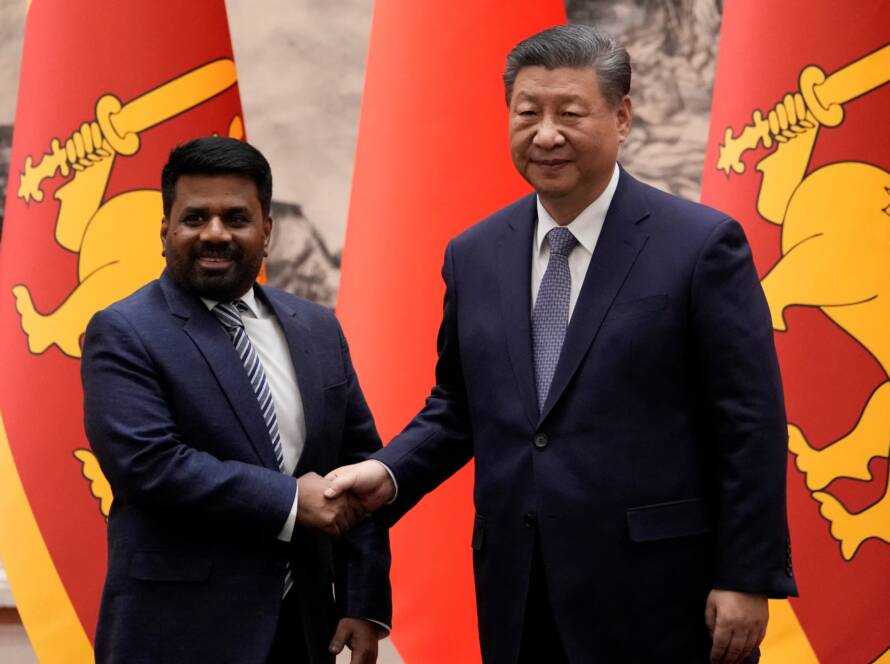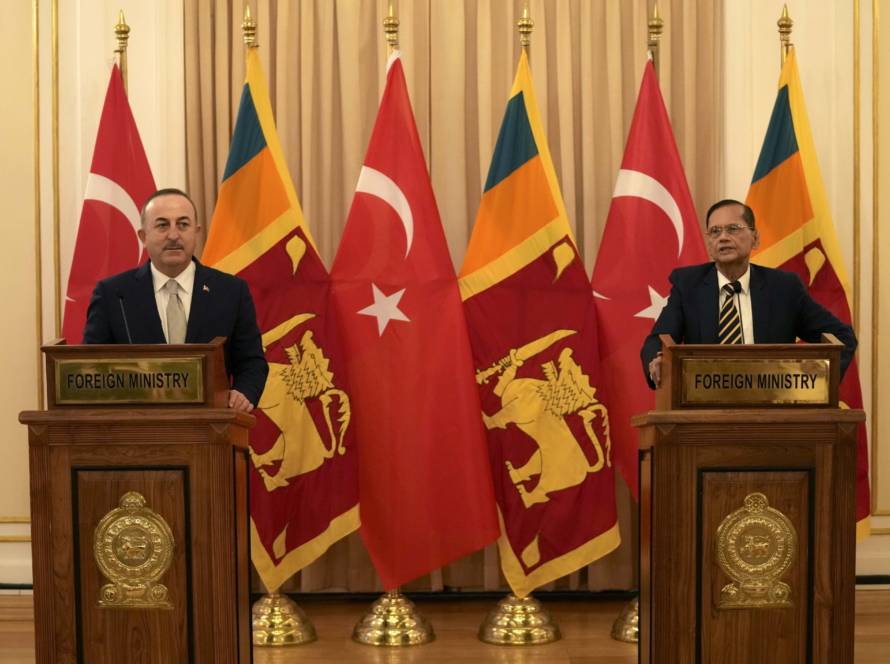By Uditha Devapriya

In contrast to most countries, especially in South and South East Asia, there have been very few attempts at historicising foreign policy in Sri Lanka. Barring the works of diplomats and scholars like Vernon Mendis and Shelton Kodikara, no proper book on the subject has come out yet. The result has been a woeful lack of research into the country’s external relations and a dearth of material on the topic. The situation is such that foreign policy analysis has become synonymous with political commentary, with popular writers reducing the subject to the caprices of leaders, governments, and political parties.
Partly, of course, this has been due to a lack of consistency on the part of those tasked with formulating foreign policy. When policy shifts from regime to regime, it naturally becomes the prerogative of those in power. It thus becomes fashionable to identify one set of policies with one regime and another set of policies with another regime, and shifts in policies with shifts in governments. Analysts then reduce a country’s external relations to politicians and political institutions, to the exclusion of almost every other consideration.
The need to historicise Sri Lanka’s foreign policy has become more urgent than ever, not least owing to what’s happening elsewhere. Domestic pressures have forced Sri Lanka to abandon its once longstanding ties with China, resulting in it tilting to India. Interestingly enough, such a shift have transpired under the watch of a political dynasty identified with Beijing. Meanwhile, events in Ukraine have impacted the country’s economy, compelling it to turn the other way, while siding with States that have either voted against or abstained from Western-sponsored resolutions against Russia.
Against such a backdrop, it’s imperative that we look to the past and take stock of the factors that pushed the country in one direction or another. In charting the history of Sri Lanka’s foreign relations, we need to make certain points clear. Who and what shaped the course of our foreign relations? Analysts have focused so much attention on external and not so much on internal factors. Yet the latter are as important to the study of foreign policy as the former. We need to account for both. The question is, how?
It must be mentioned here that these factors can’t be viewed in isolation from each other. They are interrelated. At the cost of simplifying things, I suggest that Sri Lanka’s external relations have been affected by three of them in particular: the structure of its economy, the ideology of its elites, past and present, and the linkages between domestic politics and external pressures. While perhaps not the best guide to policy formulation in Sri Lanka, an analysis of these points would nevertheless be more concrete than analyses which ascribe external relations to the whims of political elites and political institutions.
By the structure of the economy, I mean not so much the model in place today as the model established by successive colonial powers, specifically the British. This is where we need to start our analysis. Over the course of half a century, the plantation economy, an economic model imposed on Sri Lanka under British rule, bred a class of elites who served as middle-men between the State and the local population. Because of the privileges such a position conferred on them, this class became dependent on the colonial administration.
As a result of that orientation, the elite identified their interests with those of the colonial State. Kumari Jayawardena has commented that Sri Lanka’s elites made their fortunes in sectors that were cut off from modern science. Unlike their Indian counterparts, they had no real contact with industry. Jayawardena observes that this blunted their anti-imperialist potential, making them dependent on British capital and finance.
Though Jayawardena disputes the view that they became compradors or agents for foreign interests, she argues that they became ideological receptacles for colonialism, far more so than did the Indian bourgeoisie. That, necessarily, had an impact on the foreign policy they intended for the country, following independence in 1948.
If these historical factors don’t explain the D. S. Senanayake government’s decision to make foreign policy and defence subservient to British interests, through a series of agreements penned before independence, they do bear out James Manor’s view that Senanayake and the UNP played on British fears of Communist incursion in South and South East Asia to obtain crucial support and patronage from them. To put it simply, a dependent plantation economy produced a dependent elite. Assuming the leadership of the country, these elites went on to formulate a foreign policy that reflected their concerns and interests.
To say that foreign policy became an extension of elite ideological preferences would of course be simplistic. And yet, for the ruling class, this became a priority. D. S. Senanayake’s preference for a West-aligned foreign policy as opposed to a neutral one – at a time when the idea of a Non-Aligned Movement was still years if not a good decade away – hence led him to emphasise the limits imposed on Sri Lanka’s sovereignty, by its geographical position, in his despatches to Whitehall during negotiations for independence. In doing so, Manor has commented, he was trying to secure the economic interests of the colonial elite.
Later, John Kotelawala emphasised ties with the West through the Commonwealth, and the prospect of membership in SEATO, by again pointing out these limits.
“… if South India goes communist as it is going now, and invades us, can we defend ourselves with the 300,000 people we have to fight for us against these South Indians? Therefore, we must have friends to support us at all times. That being so, I will stand by the Commonwealth and by Britain as long I can.”
The bottom line to all this was that the Ceylonese elite could not think beyond allegiance to the West. That it made use of inflammatory rhetoric to define its relations with other States was perhaps to be expected: J. R. Jayewardene, for instance, has quoted D. S. Senanayake as claiming that he would be reborn “to help in the fight against Communism.”
Eventually, however, the elite’s attempt at formulating a long-term foreign policy using these manoeuvres failed, owing to the contradictions within an economic system of which they had been beneficiaries. Riding on a wave of high commodity prices, Sri Lanka suffered declining terms of trade after 1950. Its orientation towards the West notwithstanding, the island found it difficult to obtain aid from its allies. This led to a period of crisis, from which it recovered only once it reached out to China: a country the Ceylonese elite had been wary of approaching, especially after the Communist takeover of 1949.
Addressing the government’s decision to trade with a Communist State, R. G. Senanayake, the de facto architect of the Rubber-Rice Pact, had this to say.
“If we… look upon democracy in the same way [as the local Communists look at ‘international communism’] and forget our people, and calling ourselves democrats completely subordinate our national interests to fight for international democracy, or if the champions of democracy in other countries forget the vital needs of our country, then, I think, we have lost the meaning of democracy.”
What we see here is a Minister of a government that had toed a certain ideological line over its foreign relations trying to justify a policy reversal necessitated by certain external factors beyond its control. More than half a century later, the yahapalana administration, a regime that had warned of Chinese debt traps and Chinese incursions in the country before coming to power, was forced to go back on its intended policy when it found it difficult to obtain the kind of aid it wanted from those it had counted on as allies.
This is, of course, one among many historical episodes which can be used and cited to better understand which way foreign policy is headed in Sri Lanka. It’s becoming increasingly clear that ideological abstractions, such as commitment to liberal democratic norms or the norms of State sovereignty, alone can’t explain why our relations with other countries are changing so much. We need to dig into our history and find out how ideology shaped the way leaders saw the world, and how their perceptions of the world changed over time.
All this requires a proper analysis of the linkages between economic structures, domestic politics, and foreign policy. Such links can explain why, despite India’s ties with the West, it is deepening its ties with Russia. They also can explain why, in Sri Lanka, an administration led by a family who shunned ties with the West is returning to the West, and India, through engagement with institutions like the IMF. Yet this is an area in international relations that, insofar as Sri Lanka goes, has not been properly delved into. It should be, particularly since it can make us understand why foreign policy has become so unpredictable here.
(The writer is a freelance columnist completing a Postgraduate Diploma in International Relations at the Bandaranaike Centre for International Studies. He can be reached at udakdev1@gmail.com and his articles can be read at udithadevapriya.medium.com)
Disclaimer – Factum is a Sri Lanka based think-tank providing international relations analysis and public diplomacy consultancies in Sri Lanka and Asia. Visit – www.Factum.LK


